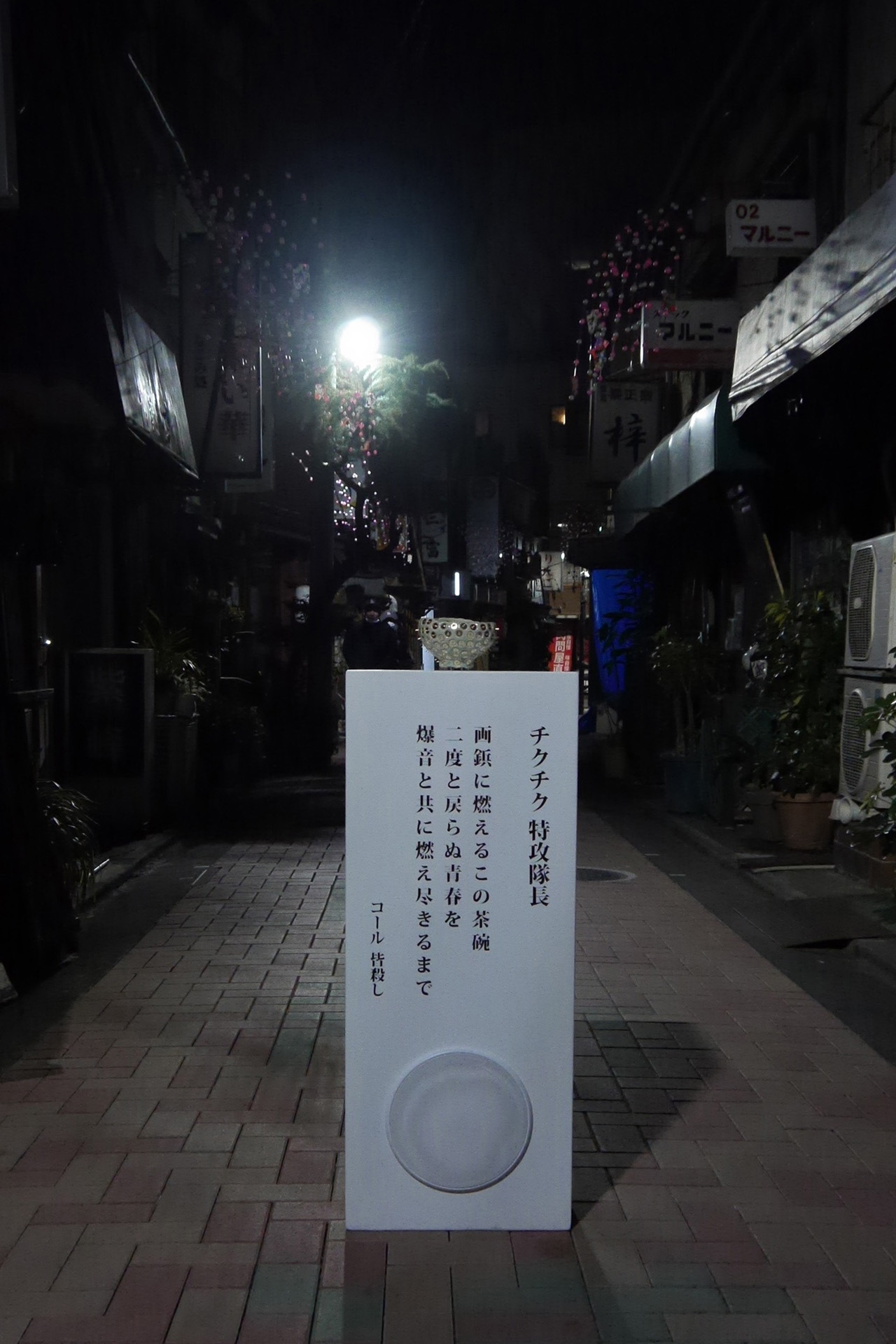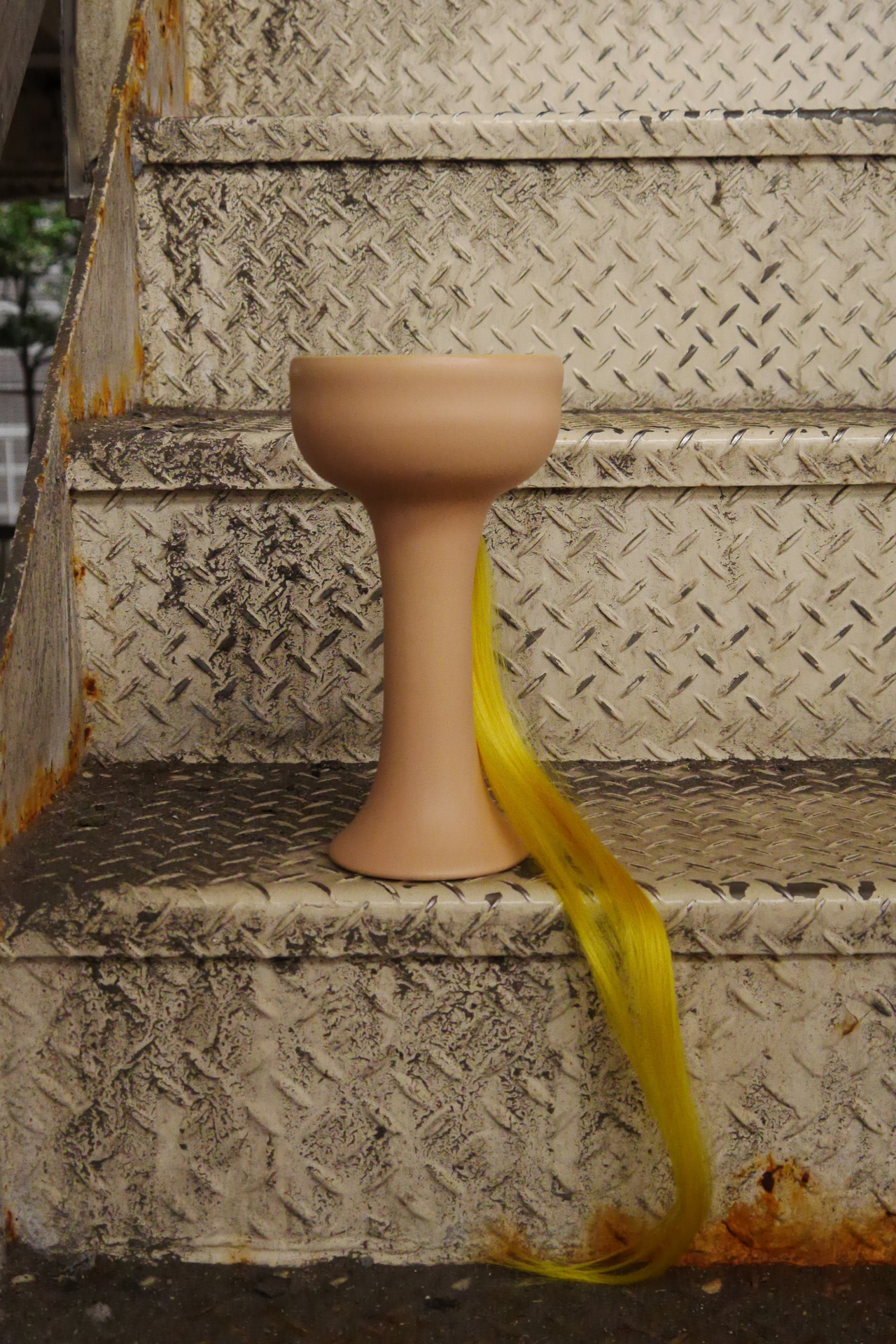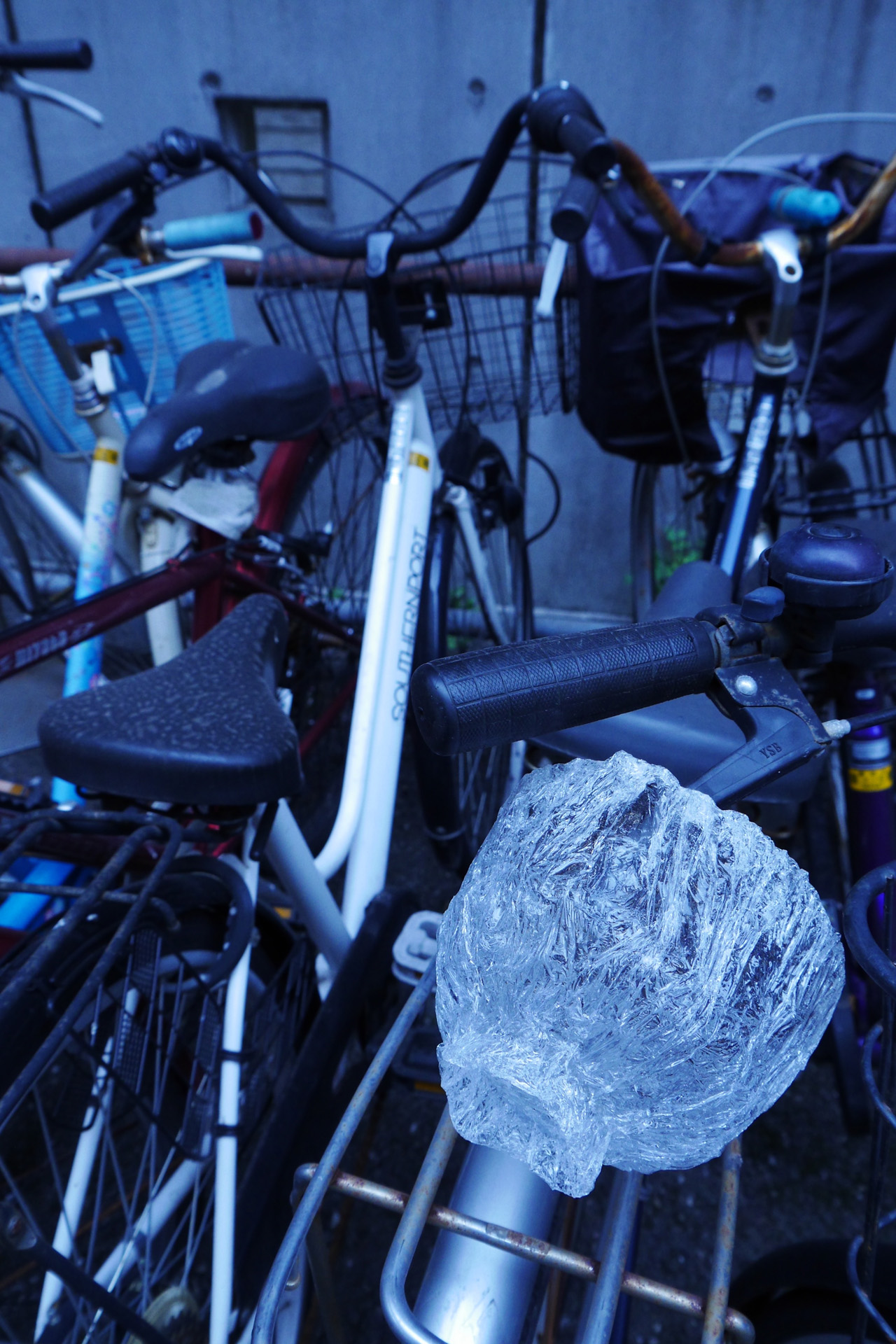Ceramics that go beyond "use and beauty" and transform
Ceramicist Yokoyama Gentaro takes on subjects that go beyond the bounds of craft, such as women's underwear and breasts, and casts in them "movements" such as the rotation of a potter's wheel and the flames burning in a kiln. In his ceramics, he expresses the way in which things that were thought to be incompatible collide and values change.
Born in Chiba Prefecture in 1978, Yokoyama currently works in Tokyo, where he has an atelier called gent ceramics. Yokoyama first encountered pottery during an extracurricular activity at a high school in Vermont, USA, where he was studying abroad. "I was able to use the potter's wheel well from the very beginning, and I received a lot of praise from many people, so I started to like it," he said, which prompted him to study pottery in earnest at the University of Hartford.
Use and beauty are often discussed in ceramics and crafts. Yokoyama says that he learned in America that there is a different world between these two. Yokoyama creates works by freely changing techniques, materials, and concepts, fluctuating between these two. His production style sometimes involves firing materials other than clay, and his theme is "movement." He pursues ceramics as a dynamic medium.
"Why do we never get bored of watching a bonfire or waves? Because pottery itself does not move, I think about how I can make it evoke dynamic emotions. With pottery, every moment during the process is so beautiful and fascinating. I love that and want to show the moments of the process."
Cracks, dripping glaze, and other "breaks," "splits," and "drip" are some of the pottery pieces that capture the moment of movement, but Yokoyama attempts to transform pottery by choosing motifs such as amoeba-like objects that look as if they might start moving at any moment, and underwear and breasts that seem to convey body heat and softness.
On the other hand, Yokoyama's distinctive style is his sense of editing, which is not bound by the conventional wisdom of traditional crafts. "It is impossible for us living in the modern age to create something from scratch. The reality of creativity is how to add and subtract from one to transform it into something new," he says, expressing eroticism and humor through unexpected combinations with pottery. He takes over crafts in a pop way.
A motorcycle gang "gathering" expressed through tea ceremony
So, the exhibition "Runaway Tea Bowl" features tea ceremony and bosozoku. Yokoyama is inspired by the hospitality of tea ceremony and has been creating tea utensils. As a member of the art group The TEA-ROOM, he has been exploring the possibilities of the Japanese comprehensive art of "Chanoyu". This time, he combines it with bosozoku, which is seen as one of the Japanese cultures.
The tea bowls are shaped like long hair at the nape of the neck, and are pre-made Kutani ware that have been "modified." When lifted from the display, the sounds of motorcycles and the shouts of biker gangs are heard, and when all the tea bowls have been lifted, a "rally" begins.
Yokoyama, who has a unique and charming style, has never incorporated aggressive elements into his work before. The trigger for this exhibition, which is an attempt at self-transformation, was his encounter with the work of artist Hironari Kubota (※). Yokoyama had begun to feel that his own creative activities were "conventional," when he saw Kubota's performance of spinning a car in the air at high speed, and was inspired by his dynamic expression, which was not his own. With a total of eight pieces, including five tea bowls and three objects, Yokoyama aims to bring a sense of exhilaration that is incompatible with ceramics.
Carrying people's feelings, the road leads to beauty
"I wonder if it is possible to transform what appears to be violence into entertainment by sublimating it into ceramic art. I am looking forward to seeing what kind of ideas I will encounter in this exhibition, which has never been done before."
A community where procedures proceed amidst intense human relationships. It is not an act of inferiority or desperation, but an act of disrupting the atmosphere that permeates society as a whole. Rather than resistance to authority, it is only attractive because of the risk. It is no wonder that the pure recklessness of this pursuit is on the same wavelength as Yokoyama, who has been thinking about the gap between crafts and art. It can also be seen as being on the same path as skateboarding, which Yokoyama has been doing since he was a child.
"I sometimes feel like cities are designed in a way that excludes skaters, and the challenge of overcoming those restrictions is art itself. Something that has a set purpose and is simply a 'purpose' cannot be art, but I think beauty resides in things that are made with people's feelings and purpose."
The tea ceremony and the rampage have something in common in that they both pursue a path. The vessels carry people's feelings, and the path flows. Where the two paths intersect, the full ecstasy of beauty awaits.
*Hironari Kubota: He has been involved in controversial projects both in Japan and overseas, such as performances inspired by indigenous festivals that remain in various regions, and a collection of "root stones" that resemble penises.









